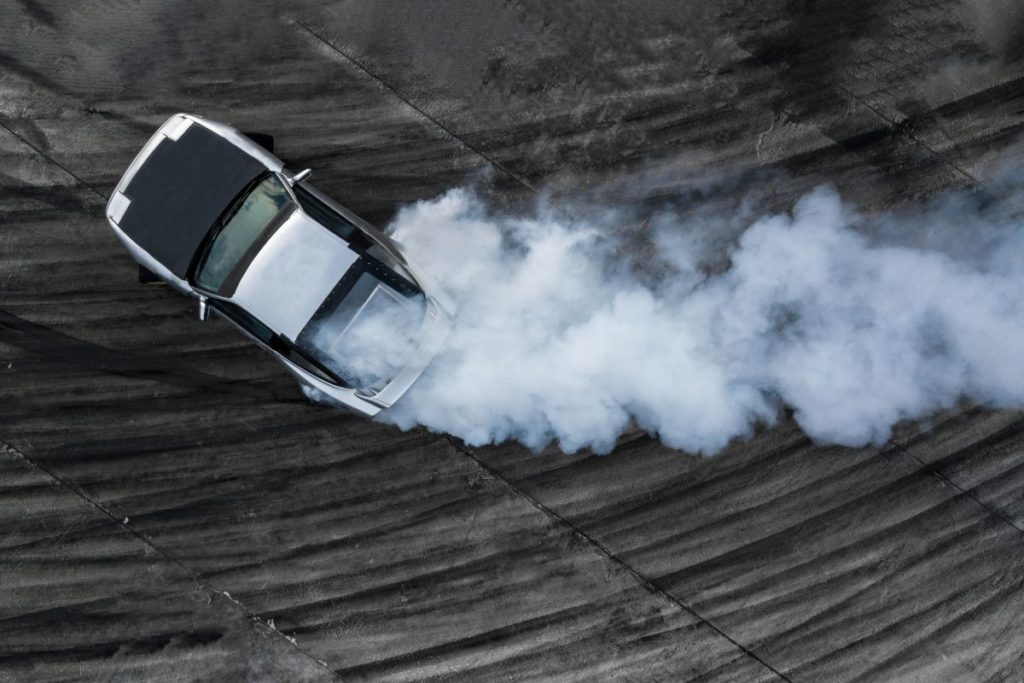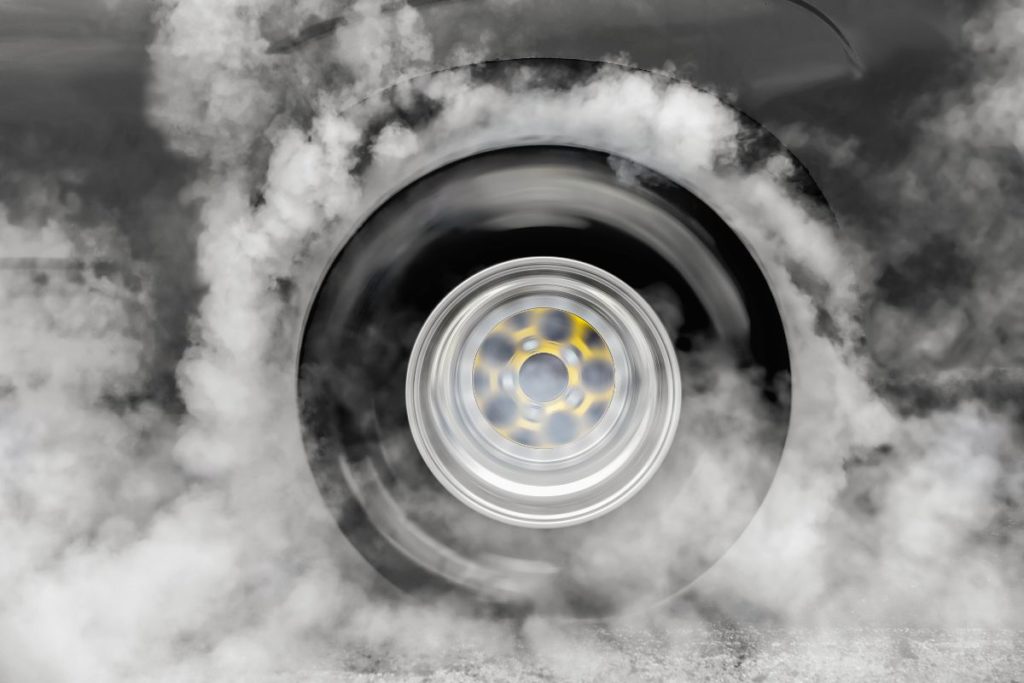*This post may contain affiliate links. As an Amazon Associate we earn from qualifying purchases.
If you are reading this article then you likely want to know if you can really drift in a minivan. It’s a question that has likely crossed the mind of many a gearhead at one point or another.
After all, minivans have a reputation for being the ultimate family hauler, not a car built for shredding tires and sliding around corners. But as it turns out, it is possible to drift a minivan – with some caveats, of course.
In this blog post, we’ll be taking a deep dive into the world of minivan drifting. We’ll explore the physics of drifting, the pros and cons of using a minivan for the task, and some important safety considerations to keep in mind.
We’ll also look at some alternative options for those who want to try their hand at drifting, but don’t happen to own a minivan. So buckle up, because it’s going to be a wild ride!

What is Drifting?
First things first: let’s define exactly what we mean by “drifting.” In the most basic terms, drifting is a driving technique where the driver intentionally oversteers, causing the rear wheels to lose traction and the car to slide or “drift.”
Drifting originated in Japan in the 1970s and has since gained worldwide popularity, especially in the world of motorsports. There are various styles and techniques of drifting, from traditional “tandem drifting,” where two cars drift together side-by-side, to more solo-oriented “gymkhana” drifting, where the driver weaves through a course filled with tight turns and obstacles.
So, now that we know what drifting is, let’s turn our attention to the physics of drifting. After all, it’s not just about stomping on the gas and hanging on for dear life – there’s some science behind it, too.

The Physics of Drifting
Drifting relies on a delicate balance of traction and power. Too much traction and the car won’t be able to slide around corners. Too little traction and the car will spin out of control.
The key to drifting is finding that sweet spot where the rear wheels are just on the brink of losing traction.
There are a few key factors that can affect a car’s ability to drift. One of the most important is weight distribution. A car with a rear-heavy weight distribution (i.e. more weight over the rear wheels) is more likely to be able to initiate a drift because the rear wheels have more weight on them to break traction.
On the other hand, a front-heavy car (like a minivan) might have more trouble initiating a drift.
Another important factor is the suspension setup of the car. A stiffer suspension (i.e. one with less “give”) can make it easier to initiate a drift because it allows the car to stay flatter and more stable during the drift. A softer suspension, on the other hand, might make the car more prone to rolling over or losing control.
So, now that we’ve got a handle on the physics of drifting, let’s get back to the main question: can you drift in a minivan?

Can You Drift In A Minivan? (Toyota, Honda, Chrysler, etc.)
As it turns out, the answer is a qualified “yes.” It is possible to drift in a minivan, but it’s definitely not the easiest vehicle to do it in. So although you can drift in one if you have another vehicle available it will likely be able to drift a lot easier than a minivan can.
If you decide that you still want to drift in your minivan I would recommend taking a look at some of the pros and cons that will come with doing that. I will go into those below.
Pros:
- Minivans are usually quite large and heavy, which can make them more stable during a drift.
- Minivans often have a lot of space inside, which can make them more comfortable when practicing drifting techniques.
Cons:
- Minivans are not generally known for their sporty handling or performance. They tend to be more geared towards comfort and practicality, rather than agility and speed.
- Minivans are often quite long and bulky, which can make them more difficult to maneuver in tight spaces.
- Minivans tend to have a higher center of gravity than sports cars, which can make them more prone to rolling over during a drift.
- Most minivans are front-wheel drive which makes drifting in them pretty difficult.
So, as you can see, there are definitely some challenges to drifting in a minivan. But with the right modifications and skills, it is possible to get a minivan to drift.

Modifications for Drifting in a Minivan
If you’re serious about drifting in a minivan, there are a few modifications you might want to consider. Here are a few ideas:
- Suspension upgrades: As I mentioned earlier, a stiffer suspension can make it easier to initiate and maintain a drift. Consider upgrading to performance shocks and springs or even a full coilover suspension setup.
- Tire upgrades: Having the right tires is crucial for drifting. Look for tires with a softer compound and more tread to give you more grip and traction.
- Weight reduction: Every little bit of weight you can shave off the minivan will make it easier to drift. Consider removing unnecessary items like the spare tire, or even gutting the interior to reduce weight.
- Performance brakes: Drifting puts a lot of strain on your brakes, so it’s important to have good brakes that can handle the heat. Consider upgrading to performance brake pads and rotors to give you more stopping power.

Safety Considerations for Drifting in a Minivan
Drifting is an inherently dangerous activity, no matter what kind of vehicle you’re doing it in. But there are a few additional safety considerations to keep in mind when drifting in a minivan:
- Rollover risk: As I mentioned earlier, minivans have a higher center of gravity than sports cars (or even a small sedan), which can make them more prone to rolling over during a drift. This means it’s especially important to be careful when drifting in a minivan and to avoid taking sharp turns or going too fast.
- Damage to the minivan: Drifting can be tough on a vehicle, and minivans are no exception. Expect to put a lot of wear and tear on your minivan if you’re drifting it regularly.
- Damage to other cars or property: Remember that when you’re drifting, you’re not just putting yourself at risk – you’re also putting others around you at risk. Be sure to only drift in a safe, controlled environment, and to always be mindful of your surroundings.

Alternatives to Drifting in a Minivan
If the idea of drifting in a minivan doesn’t appeal to you, or if you just don’t happen to own a minivan, there are plenty of other options for getting your drift on. Here are a few ideas:
- Join a drift group or club: Many cities and towns have local drift groups or clubs that offer training and practice sessions for aspiring drifters. This can be a great way to get started and to learn from more experienced drifters.
- Rent a drift-ready car: If you don’t have a car that’s suitable for drifting, consider renting one specifically for the purpose. There are companies that specialize in renting out drift-ready cars for those who want to give it a try.
- Take a drifting class: Another option is to sign up for a drifting class or workshop. These classes are typically run by experienced drifters and can teach you the basics of drifting in a safe, controlled environment.
Can You Drift With An AWD System On Your Car?
First of all, let’s get one thing straight. AWD stands for all-wheel drive, which basically means all four wheels are powered by the engine. Now, I know what you’re thinking, “that sounds great, how could that NOT be perfect for drifting?”
Well, my dear friend, it’s all about power distribution. In an RWD system, all the power is sent to the rear wheels, giving you more control and the ability to get that rear-end slide-happy.
Now, I know what you’re thinking. “But wait, you can still send power to the rear wheels with an AWD system, right?” Sure, you can, but it’s not the same. The power distribution is split between all four wheels, meaning you don’t have the same level of control over the rear end as you do in a RWD car.
So, yes, you can drift with an AWD system, but it’s not the same as a good old RWD drift sesh.
But, wait! It gets even better! Some AWD systems come with torque vectoring, which basically means the system can send more power to specific wheels to improve handling. So, you might be thinking, “hey, that’s great! That means I can drift even better with an AWD system!”
Well, my friend, think again. The torque vectoring is designed to improve handling and stability, not make you look like a drift pro.
So, what’s the bottom line? Can you drift with an AWD system? Sure, you can, but it’s not the same as a classic RWD drift car. It’s like comparing a hotdog to a gourmet steak dinner. Sure, they both fill you up, but the steak dinner is where it’s at.
The same goes for drifting, RWD is where it’s at.
Now, don’t get me wrong, I’ve seen some pretty impressive drift demos with AWD systems, but let’s be real, it’s not the same. It’s like comparing a clown car to a Ferrari, sure, the clown car can still drive, but it’s not the same experience.
In conclusion, can you drift with an AWD system? Yes, you can. But, it’s not the same as a classic RWD drift car. If you want to get serious about drifting, you need to leave the AWD system behind and get yourself a RWD car.
That’s where the real drift magic happens, my friend.
So, in conclusion, if you want to be a drift king or queen, forget about AWD systems and stick with a classic RWD drift car. Trust me, you won’t regret it. And if you do, well, I’ll just have to call you a poser and take away your drift crown.
So, what do you say, are you ready to become a real drift king or queen?
Final Thoughts
So, can you drift in a minivan? The answer is you absolutely can, however, it’s definitely not the easiest vehicle to do it in. Minivans have some pretty serious limitations when it comes to drifting, including their weight, size, and center of gravity.
That being said, with the right modifications and skills, it is possible to get a minivan to drift. Just be sure to always keep safety in mind, and to only drift in a controlled, legal environment.
If you’re interested in drifting, but don’t own a minivan, there are plenty of other options available. Consider joining a drift group or club, renting a drift-ready car, or taking a drifting class. No matter what path you choose, remember that drifting is a dangerous activity and should always be approached with caution and respect.
Well, that wraps up our deep dive into the world of minivan drifting. I hope you enjoyed the ride, and that you’ve learned a thing or two about the feasibility (and safety!) of drifting in a minivan. Until next time, happy drifting!
